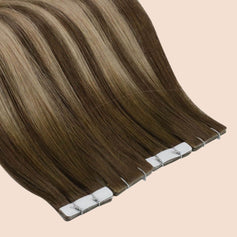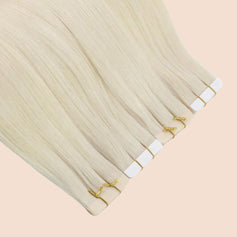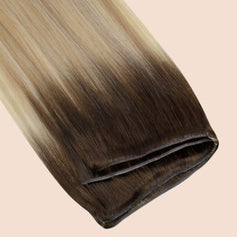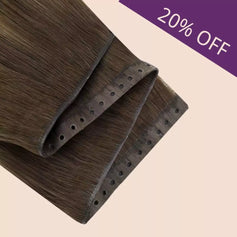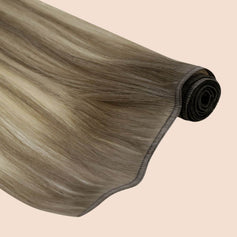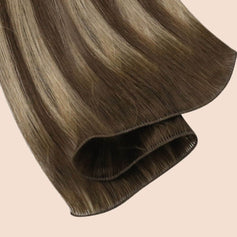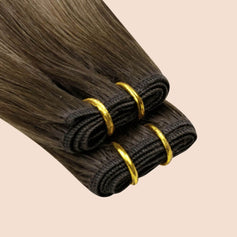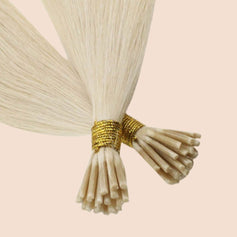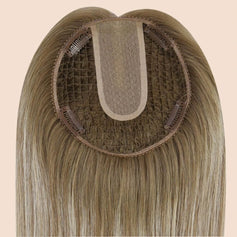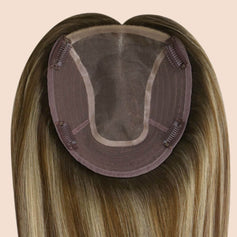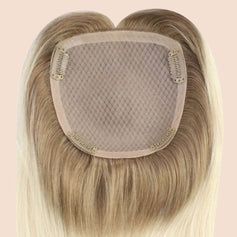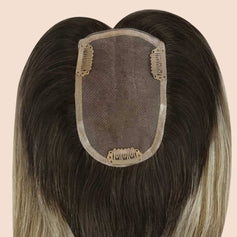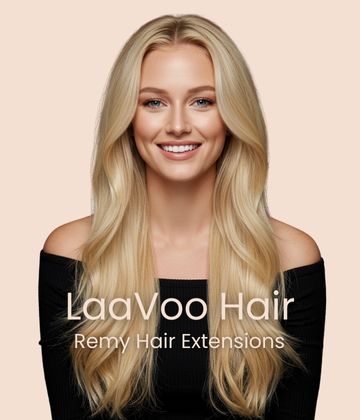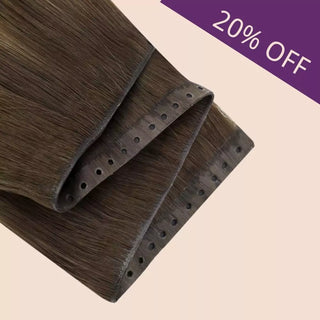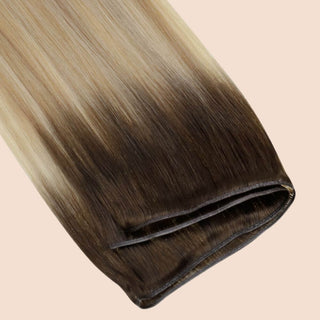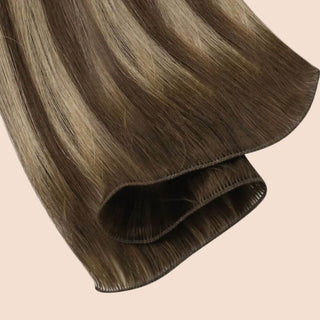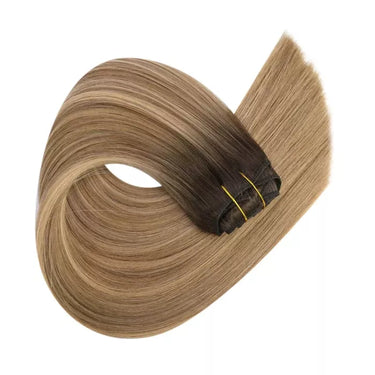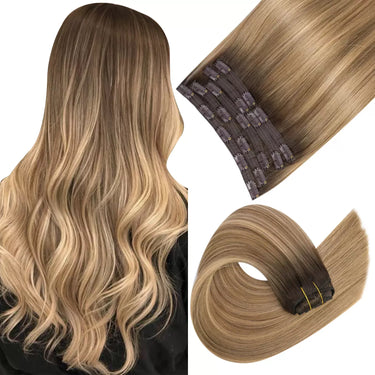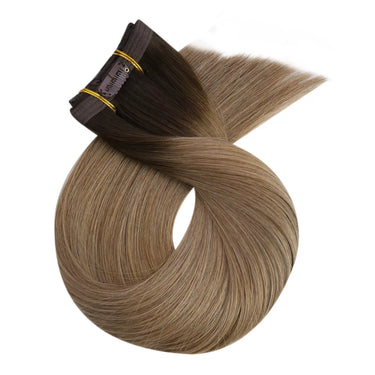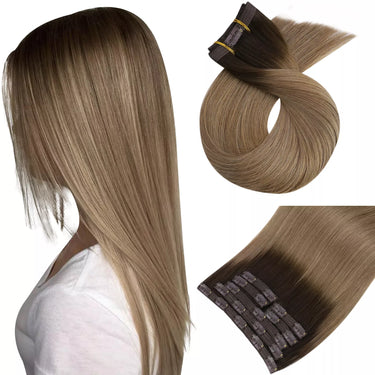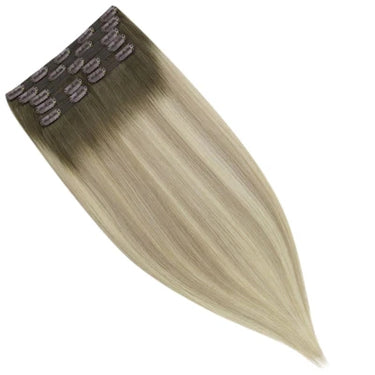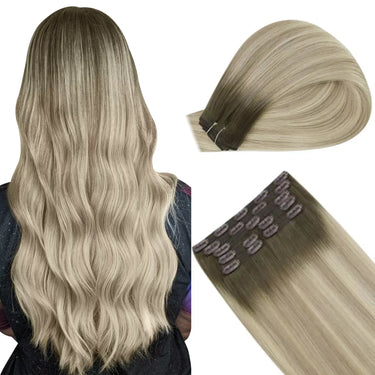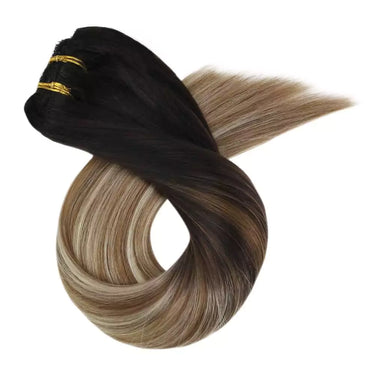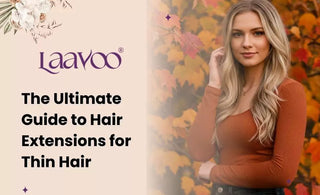
Table of Contents
For those of us with fine or thin hair, hair extensions can feel like the dream solution. But here’s the catch — not all extensions are created equal. In fact, the wrong ones can actually make thin hair look worse, or even cause breakage.
So what are the best hair extensions for thin hair, and which ones should you absolutely avoid? Let’s break it down in plain English so you can make the right choice for your hair.
Why Thin Hair Needs Extra Care with Extensions
Thin hair is delicate. Unlike thick strands, it doesn’t have the strength to support heavy add-ons. That’s why some extension methods — like machine wefts or chunky clip-ins — can pull, tug, and damage your natural strands. Instead of thicker hair, you’re left with more shedding and stress.
But don’t worry. With the right type of extension, you can totally rock fuller, longer locks without sacrificing your natural hair health. Let’s dive into the top picks.
The Best Hair Extensions for Thin Hair
Injection Tape-In Hair Extensions
If thin hair had a soulmate, it would be injection tape-ins. Why?
- Super flat and lightweight, so they sit close to the scalp without bulk.
- The injected hair mimics natural growth for an ultra-realistic look.
- Reusable and last 8–10 weeks per install.
You can still wear your hair up or down without obvious bonds. Just keep oils away from the tapes, and you’re set.

Butterfly Weft Extensions
Butterfly wefts are quickly becoming a holy grail for fine-haired beauties — and it’s easy to see why.
- Comfortable & Invisible: These invisible wefts are ultra-thin and soft, blending seamlessly with natural hair. No bulky seams, no irritation.
- Longer Lifespan: Made with 100% virgin human hair, butterfly wefts can last up to a year with good care.
- No Short Return Hair: That means no tangling, no matting, and no annoying itchy bits against your scalp.
- Customizable Fit: Easily cut and shaped to fit your head perfectly for a flawless look.
- Minimal Damage: Their clever PU flat weft design allows your natural hair to be pulled through tiny holes, aligning with your growth pattern. This reduces tension and keeps your hair healthier.
Basically, they’re strong, comfortable, and nearly invisible — a serious win for thin hair.
Hand Tied Weft Extensions
Hand-tied wefts are stitched by hand, which makes them thinner and lighter than machine wefts. Perfect for fine hair, they:
- Lay flat against the scalp.
- Add volume without bulk.
- Can be layered for more density without stressing roots.
Always see a pro stylist for tension-free installation.
Genius Weft Hair Extensions
Genius wefts are basically the “next-gen” version of hand-tied extensions. Here’s why they’re loved:
- Longer Lifespan: 100% virgin human hair, lasting up to a year.
- Natural-Looking: Thin, flexible wefts blend seamlessly and sit flat on the scalp.
- No Return Hair: No short beard hairs rubbing your scalp or tangling with natural strands.
- Cut from Anywhere: Unlike hand-tied wefts, genius wefts won’t unravel. Stylists can cut them to perfectly fit your head size.
If you want extensions that look undetectable, feel comfortable, and last ages, genius wefts are worth the investment.
Hair Toppers (for thinning at the crown)
If your hair is thinning on top, extensions alone might not cut it. That’s where toppers come in. They cover thinning spots while blending in with your natural hair. Current options include:
Remy Hair 3×5 Inch Topper: Great for subtle coverage.
Remy Hair 5×5 Inch Topper: More coverage for early thinning.
Virgin Hair 3×5 Inch Topper: Softer, longer-lasting option for daily wear.
Virgin Hair 6×7 Inch Topper: Extra coverage and volume for advanced thinning.
Virgin Hair 6×6 Inch Fishnet Topper: Breathable, lightweight, and comfortable all day.
Think of toppers as a confidence-boosting quick fix for sparse areas.
Injection Clip In Hair Extensions
Most clip-ins are too heavy for thin hair, but injection clip-ins are a gentler alternative.
- Hair is inserted into a PU weft to mimic natural hair growth, making the extensions appear more seamless and invisible.
- Lightweight and invisible bases sit flatter against your head for a natural look.
- Perfect for quick transformations without long-term commitment.
Why Most Hair Extensions don’t Work for Thin Hair?
Heavy Clip In Extensions
Clip-ins sound fun because you can DIY them at home, but for thin hair, they’re often a nightmare. The clips themselves are bulky and heavy, which makes them super noticeable on sparse hair. They can tug on delicate strands, leading to breakage or even hair loss if worn too often. In areas with less coverage, clips are more likely to slip out or peek through.
Fusion / Keratin Bond Extensions
These are installed using heat or glue, which is already a red flag for fragile hair. The keratin bonds are hard and visible if you don’t have enough hair to cover them. The high heat or adhesive used during application can weaken thin strands. Wearing them long-term puts extra stress on your roots, making breakage more likely.
Machine-Tied Wefts
Machine wefts are thick and heavy — the opposite of what thin hair needs.The base is bulky and requires plenty of natural hair to hide. Installation usually involves braiding or pulling lots of your hair into the track, which fine hair just can’t handle. Over time, the constant pulling can cause scalp tension and make thinning worse.
Wire Hair Extensions
Wire hair extensions are a common “quick fix,” but they’re not friendly to thin hair. The wire adds weight and tension to fine strands. Can sit awkwardly or slip, making hair look uneven. Constant pressure on delicate roots may cause breakage or worsen thinning over time.
How to Care for Extensions on Thin Hair
- Wash Gently – Use sulfate-free shampoo, focus on scalp, avoid scrubbing too hard.
- Dry with Care – Dab instead of rubbing, and keep blow-dryer heat low.
- Detangle Daily – Wide-tooth comb, starting from the ends upward.
- Protect at Night – Sleep with a loose braid or on a silk pillowcase.
- Keep Oils Away – Avoid applying oils near adhesive bonds.
Finding the right hair extensions for thin hair is about choosing lightweight, natural, and scalp-friendly options. Injection tape-ins, butterfly wefts, hair toppers, hand-tied wefts, genius wefts, and injection clip-ins are all safe bets that can give you the length and volume you’ve always wanted — without damaging your strands.With the right choice and a little TLC, thin hair doesn’t have to hold you back from the full, beautiful look you deserve.
You may also interested in:
What You Need To Know About Hair Toppers

